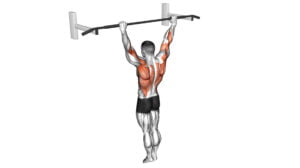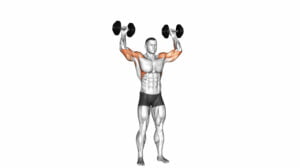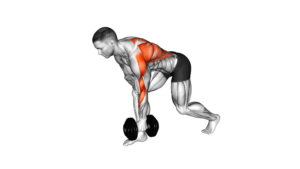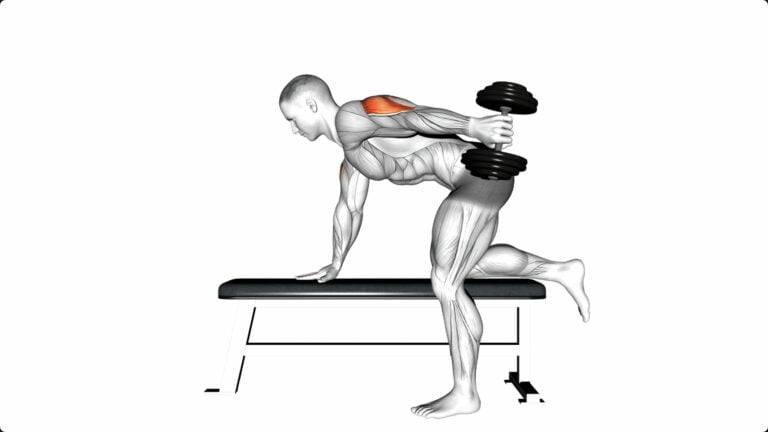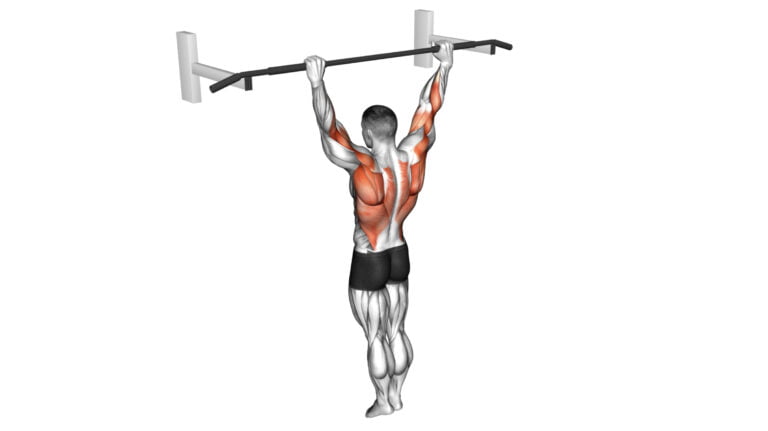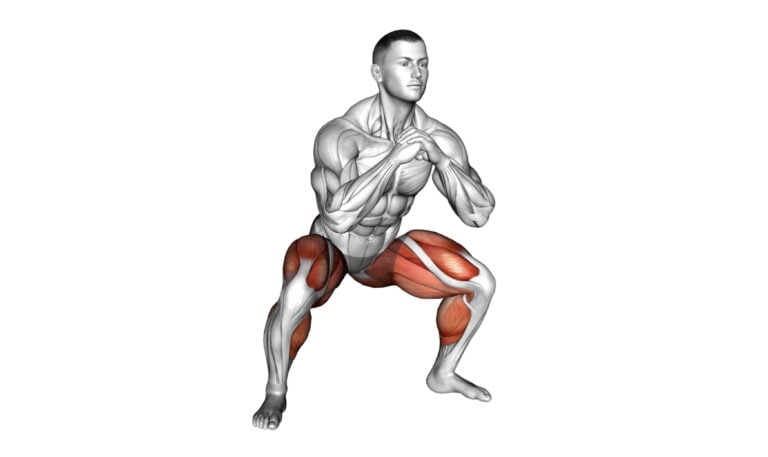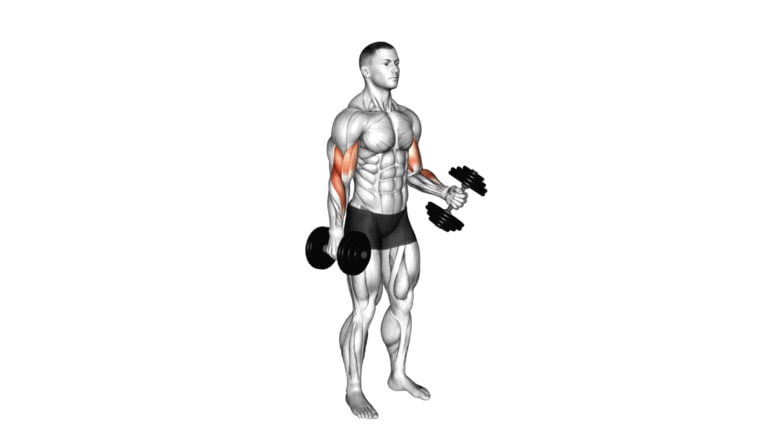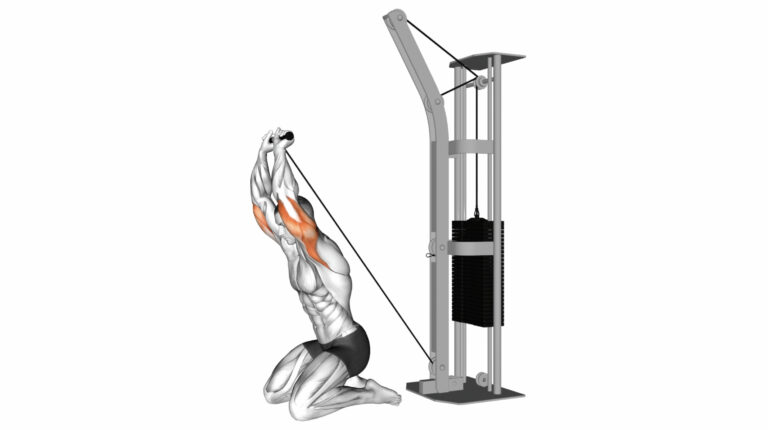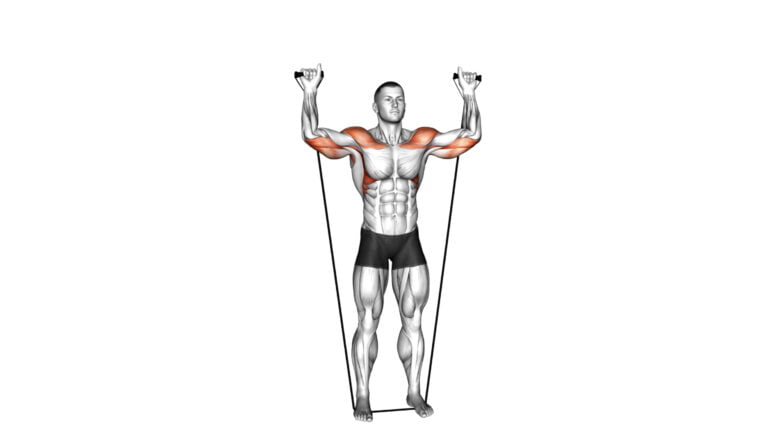5 Effective Pull-Up Band Exercises For Building Upper Body Strength
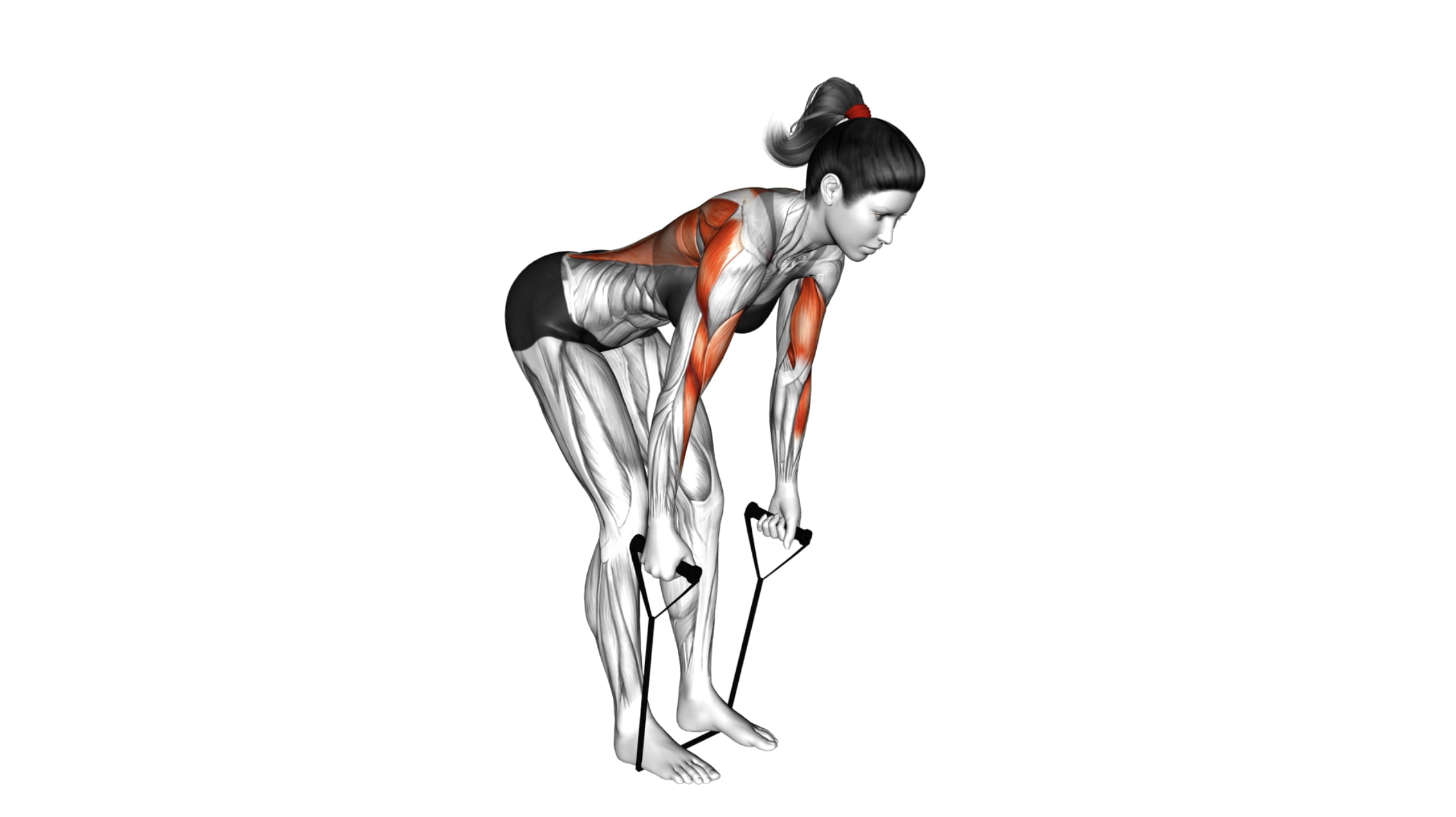
Pull-up band exercises are often overshadowed by the allure of heavy iron and gleaming gym equipment, but their simplicity belies their effectiveness in building upper body strength.
As a seasoned fitness trainer with over a decade of experience guiding clients through transformative workouts, I’ve witnessed firsthand how pull-up bands can sculpt powerful shoulders, chiseled arms, and robust backs.
These versatile tools open doors to resistance training that supports muscle growth and joint health for athletes and beginners alike.
Understanding the full potential of pull-up bands is crucial to maximizing your workout regimen. This article peels back the layers on how these lightweight bands can revolutionize your strength-training routine—without needing a fully stocked gym at your disposal.
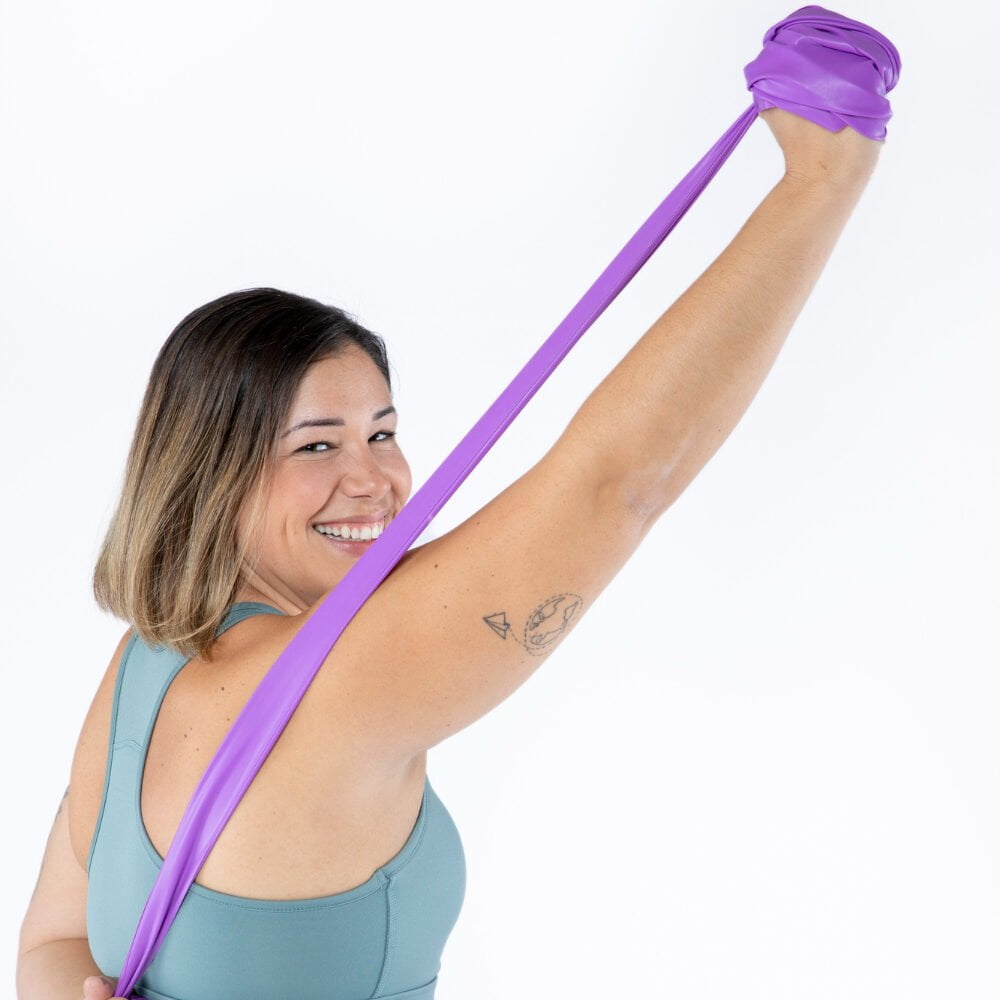
Read on to unlock five dynamic exercises that promise not just results but also an invigorating way to challenge your muscles differently every time you train. Get ready to strengthen and tone – one stretchable band at a time!
Key Takeaways
- Pull – up bands enhance strength training, allowing you to target specific muscles like lats and deltoids without heavy weights; they’re great for home or travel workouts.
- Adjustable resistance levels of the bands make them suitable for all fitness levels, helping progress as you get stronger while being able to perform a variety of exercises.
- Exercises such as band face pulls, thrusters, alternate biceps curls, assisted pull-ups, and bent-over rows work multiple muscle groups for full upper-body development.
- Proper form is crucial during these exercises to avoid common mistakes that could lead to injury or reduce their effectiveness.
- To see workout results from pull – up band exercises, combine consistent training with a healthy diet and stay hydrated for muscle recovery.
Benefits of Pull-Up Bands
Pull-up bands offer a wide range of benefits, including strength training, mobility enhancement, and the ability to diversify your workout routine. These bands can be used for various exercises and are an effective tool for building upper body strength.
Strength training
Strength training with pull-up bands offers a dynamic way to build muscle and increase overall upper body power. These versatile tools add resistance without the need for heavy weights, making them ideal for home gyms or on-the-go workouts.
Engaging in exercises like band-assisted pull-ups and face pulls targets key muscles such as your lats, deltoids, biceps brachii, and trapezius muscles. This approach not only improves strength but also enhances joint stability and can lead to better posture.
Incorporate pull-up band exercises into your routine to challenge your muscles through a full range of motion. With each repetition of bent-over rows or hammer curls, you’re activating multiple muscle groups simultaneously – essential for compound exercise benefits.
Embrace the tension the bands provide; it’s crucial for strengthening connective tissues alongside primary movers. Elevate your fitness game by using these simple yet effective tools to maximize muscle gains and push past plateaus.
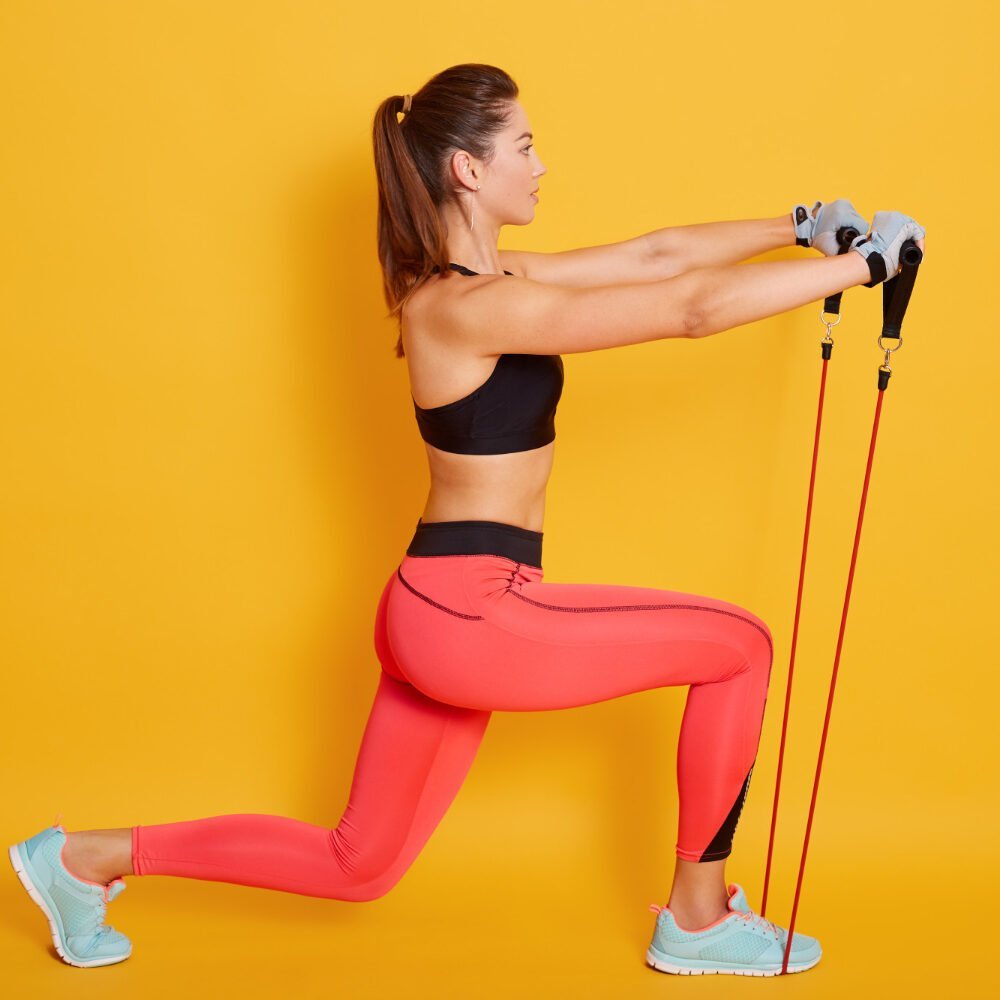
Mobility enhancement
Pull-up bands are a game-changer for boosting your mobility. With their stretchy resistance, they’re perfect for dynamic stretching that prepares your muscles and joints for action.
Imagine being able to reach further, squat deeper, and experience less shoulder pain because you’ve worked on making your rotator cuff muscles more flexible! These bands encourage your body’s ability to move freely without stiffness or discomfort.
Working with pull-up bands can lead you to more fluid motions during exercises like deadlifts, squats, and even everyday activities such as reaching up high or bending down. Incorporating band exercises into your routine not only builds muscle but also trains the smaller stabilizing muscles around joints which contribute to better posture and movement patterns.
Every pull and stretch is an opportunity to improve how effectively you walk, twist, or lift objects in daily life.
Diversifying workout routine
Switching up your exercise plan with pull-up band exercises can introduce new challenges to your muscles, helping you break through plateaus. Incorporating a variety of movements targets different muscle groups and improves overall fitness.
Routine diversity keeps workouts exciting and can boost motivation, ensuring you stick with it for the long haul.
Try looping a band over a pull-up bar or anchoring it beneath your feet to add resistance to push-ups, squats, or rows. This versatile tool allows for an array of effective exercises that engage everything from biceps and triceps to glutes and hamstrings.
Shifting focus now towards the unique properties of pull-up bands will reveal even more about their benefits in strength training programs.
Unique Properties of Pull-Up Bands
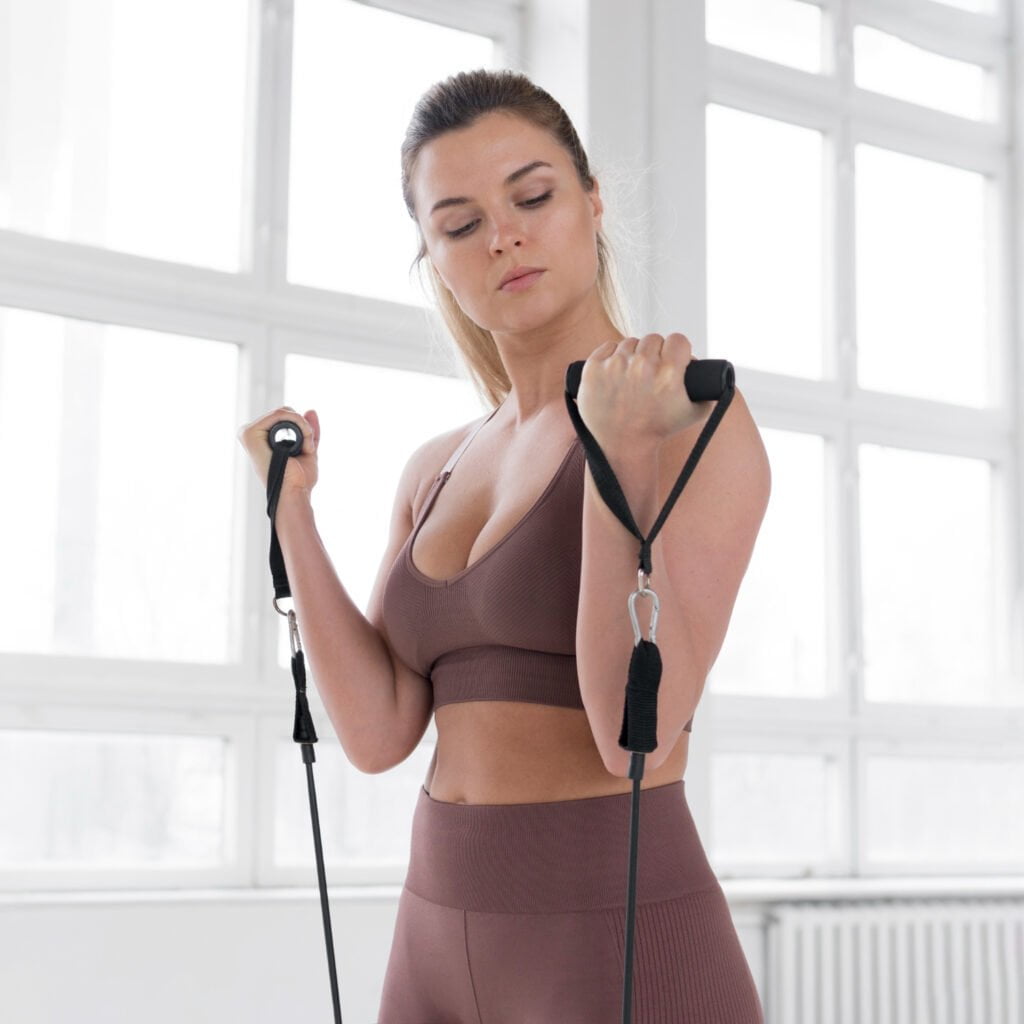
Pull-up bands offer unique properties that make them a versatile and effective tool for building upper body strength. With adjustable resistance levels, portability, and the ability to be used for various exercises, pull-up bands can help you achieve your fitness goals anytime, anywhere.
Adjustable resistance levels
Adjustable resistance levels on pull-up bands allow you to customize the intensity of your workout, making them suitable for both beginners and experienced individuals. By adjusting the resistance level, you can gradually increase the challenge as your strength improves, providing a versatile tool for progressive training.
This feature also makes pull-up bands an excellent option for targeting specific muscle groups at varying intensities, enabling a comprehensive upper body workout that adapts to your fitness level and goals.
Portable and versatile
Pull-up bands are portable and versatile, making them excellent for a range of exercises both at the gym or in the comfort of your home. Their compact design allows you to easily transport them for workouts while traveling or on-the-go.
What’s more, their versatility means they can be used not only for pull-up band exercises but also for various resistance training movements aimed at improving strength and flexibility.
With pull-up bands, you have a convenient fitness tool that adapts to different workout settings and caters to diverse exercise needs.
The portability and versatility of pull-up bands offer an effective solution for individuals looking to maintain their fitness routines regardless of location or space limitations.
Can be used for various exercises
Pull-up bands can be used for various exercises, making them a versatile addition to your workout routine. Whether you want to work on strength, mobility, or flexibility, pull-up bands offer a range of options to target different muscle groups.
From assisting with pull-ups and chin-ups to adding resistance for bicep curls and chest presses, these bands provide the flexibility needed for a comprehensive upper body workout.
Incorporating pull-up bands into your exercise regimen can help diversify your training program and challenge your muscles in new ways. By adjusting the resistance level or using different band positions, you can tailor each exercise to meet your specific fitness goals while engaging muscles throughout the entire range of motion.
5 Effective Pull-Up Band Exercises for Upper Body Strength
Try out these challenging yet effective pull-up band exercises to build your upper body strength and take your workout routine to the next level. Read on to learn more about each exercise and how they can benefit you.
1. Band Face Pull
Engage your back, shoulders, and arms with the band face pull. Begin by attaching a resistance band to a stable anchor at chest height. Stand facing the anchor, holding one end of the band in each hand.
Pull the bands towards your face while keeping your elbows high and squeezing your shoulder blades together. Slowly return to the starting position and repeat for a complete set.
To intensify this exercise, use a thicker resistance band or increase the tension on your current band. The band face pull effectively targets the rear delts and upper back muscles, promoting improved posture and overall upper body strength.
2. Band Narrow Grip High Row
Elevate your upper back and shoulder training with the Band Narrow Grip High Row. Begin by securing a resistance band at chest height, making sure it’s firmly anchored. Stand facing the anchor point, and grasp the band with a narrow grip, hands positioned close together.
Maintain a slight bend in your knees, engage your core, and pull the band toward your upper chest by retracting your shoulder blades. Keep your elbows close to your body throughout the movement and squeeze your shoulder blades together at the top of the row. Slowly return to the starting position, resisting the pull of the band to maintain tension in your muscles.
This exercise primarily targets the upper trapezius, rhomboids, and rear deltoids while engaging the biceps and forearms. The narrow grip emphasizes the middle and upper back, contributing to improved posture and overall upper body strength.
Integrate the Band Narrow Grip High Row into your resistance training routine to enhance upper back development and shoulder stability. Experiment with different band resistances to suit your fitness level and gradually progress as your strength improves. With its focus on scapular retraction and upper back engagement, this exercise is a valuable addition to diversify your training regimen and promote a well-balanced upper body musculature.
3. Band Standing Alternate Biceps Curl
The band standing alternate biceps curl is an effective exercise for strengthening the biceps and forearms. Begin by stepping onto the middle of the pull-up band with one foot, holding one end of the band in each hand.
Stand tall with your feet shoulder-width apart and palms facing forward. Keeping your elbows close to your body, curl one arm at a time towards your shoulders while maintaining tension on the band.
Slowly lower one arm while simultaneously curling the other to create a fluid alternating motion.
4. Band Assisted Pull-Up
Transitioning from the Band Standing Alternate Biceps Curl to the Band Assisted Pull-Up, here’s a powerful exercise that not only strengthens your upper body but also helps in building towards unassisted pull-ups.
The band assisted pull-up is an excellent way to progressively train for full pull-ups by using resistance bands to make the movement more manageable.
To perform this exercise correctly, begin by securing one end of a resistance band around the pull-up bar and loop your foot or knee into the other end. Keeping your core engaged, slowly lower yourself down until your arms are fully extended and then pull yourself back up using your upper body strength.
5. Band Bent-over Row
After mastering the Band Assisted Pull-Up, it’s time to challenge your upper body strength with the Band Bent-over Row. This exercise primarily targets your back muscles, including the lats and rhomboids, while also engaging the biceps and forearms for a comprehensive upper body workout.
By maintaining proper form and gradually increasing resistance levels, you can effectively build muscle mass and improve overall strength.
To perform this exercise, secure the band under your feet and grasp each end of the band with an overhand grip. Hinge at your hips to bend forward slightly while keeping a straight back.
Tips for getting the most out of each exercise
Focus on proper form and technique, gradually increase resistance levels, and listen to your body for rest and recovery – read on for detailed guidance on maximizing the effectiveness of these exercises!
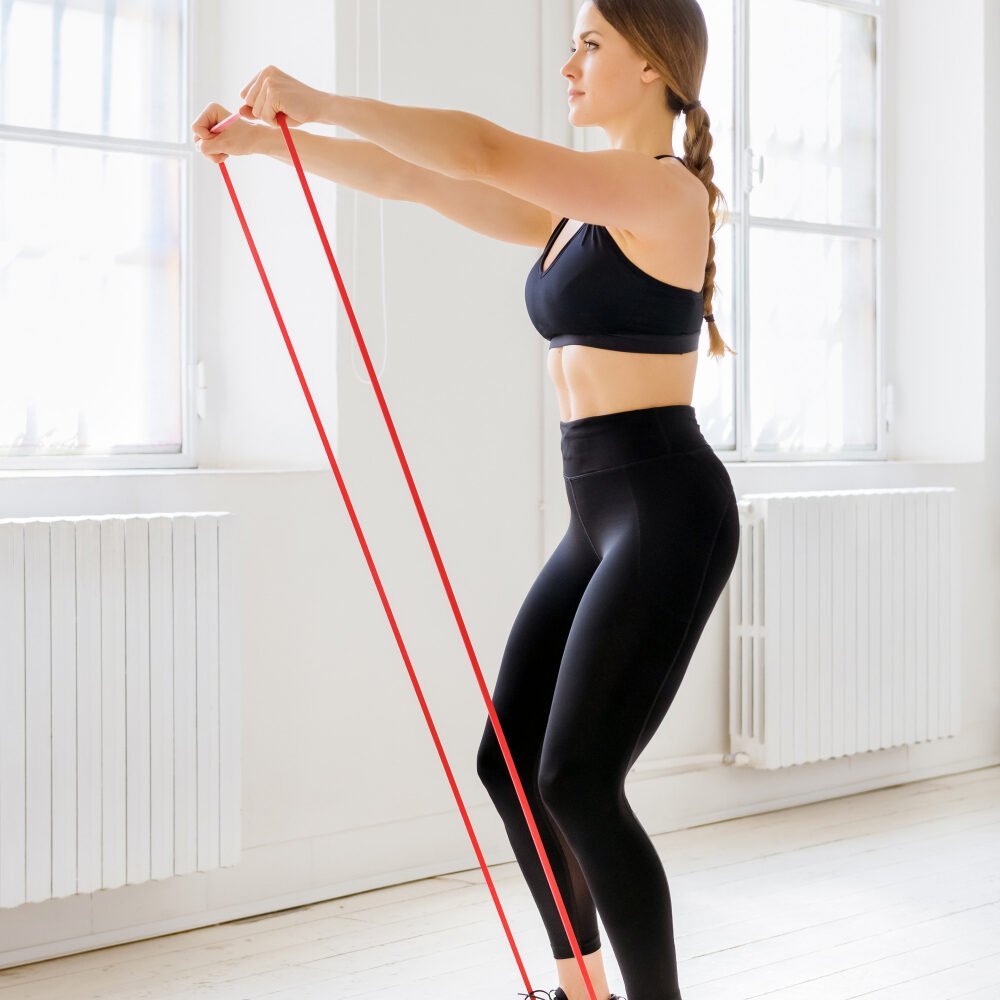
Common Mistakes
- Allowing the elbows to flare out during band face pulls, which reduces activation of the back muscles and places strain on the shoulders.
- Using momentum instead of controlled movements during Band Narrow Grip High Row, which diminishes the effectiveness of the exercise and increases the risk of injury.
- Performing the band standing alternate biceps curl with excessive swinging or jerking motions, leading to decreased isolation of the biceps and potential strain on other muscles.
- Relying too heavily on assistance from the band during band-assisted pull-ups, which hinders progress in building upper body strength.
- Failing to maintain proper form and alignment during band bent – over rows, resulting in reduced muscle engagement and an increased risk of back strain.
Recommended Sets And Reps
To maximize the effectiveness of these pull-up band exercises, consider the following recommended sets and reps:
- Band Face Pull: 3 sets of 12-15 repetitions
- Band Narrow Grip High Row: 3 sets of 10-12 repetitions
- Band Standing Alternate Biceps Curl: 3 sets of 12-15 repetitions each arm
- Band Assisted Pull-Up: 3 sets of 8-10 assisted reps
- Band Bent-over Row: 3 sets of 10-12 repetitions
How long to wait for workout results
Results from a workout routine can start to show within a few weeks, but noticeable changes typically take around 4-8 weeks of consistent training. With regular exercise and proper nutrition, improvements in strength and muscle tone become more evident over time.
Keep an eye out for gradual progress rather than expecting instant transformations. Remember that individual results may vary based on factors such as genetics, diet, recovery, and the intensity of the workouts.
Consistency is key when it comes to achieving workout results. Give your body ample time to adapt and change by sticking to a well-rounded fitness plan with adequate rest periods between sessions.
Eat a Healthy Diet
Maintaining a healthy diet is crucial for maximizing the benefits of pull-up band exercises. Including a variety of nutritious foods such as lean proteins, whole grains, fruits, and vegetables provides essential nutrients that support muscle recovery and growth.
Consuming adequate protein helps repair and build muscles after workouts. Carbohydrates fuel energy levels during exercise, while healthy fats aid in overall health and provide sustained energy throughout the day.
Incorporating nutrient-dense meals before and after working out can enhance performance and optimize results. Hydration also plays a vital role in maintaining peak physical condition, so drinking an ample amount of water fuels endurance and assists in muscle recovery post-workout.
Conclusion
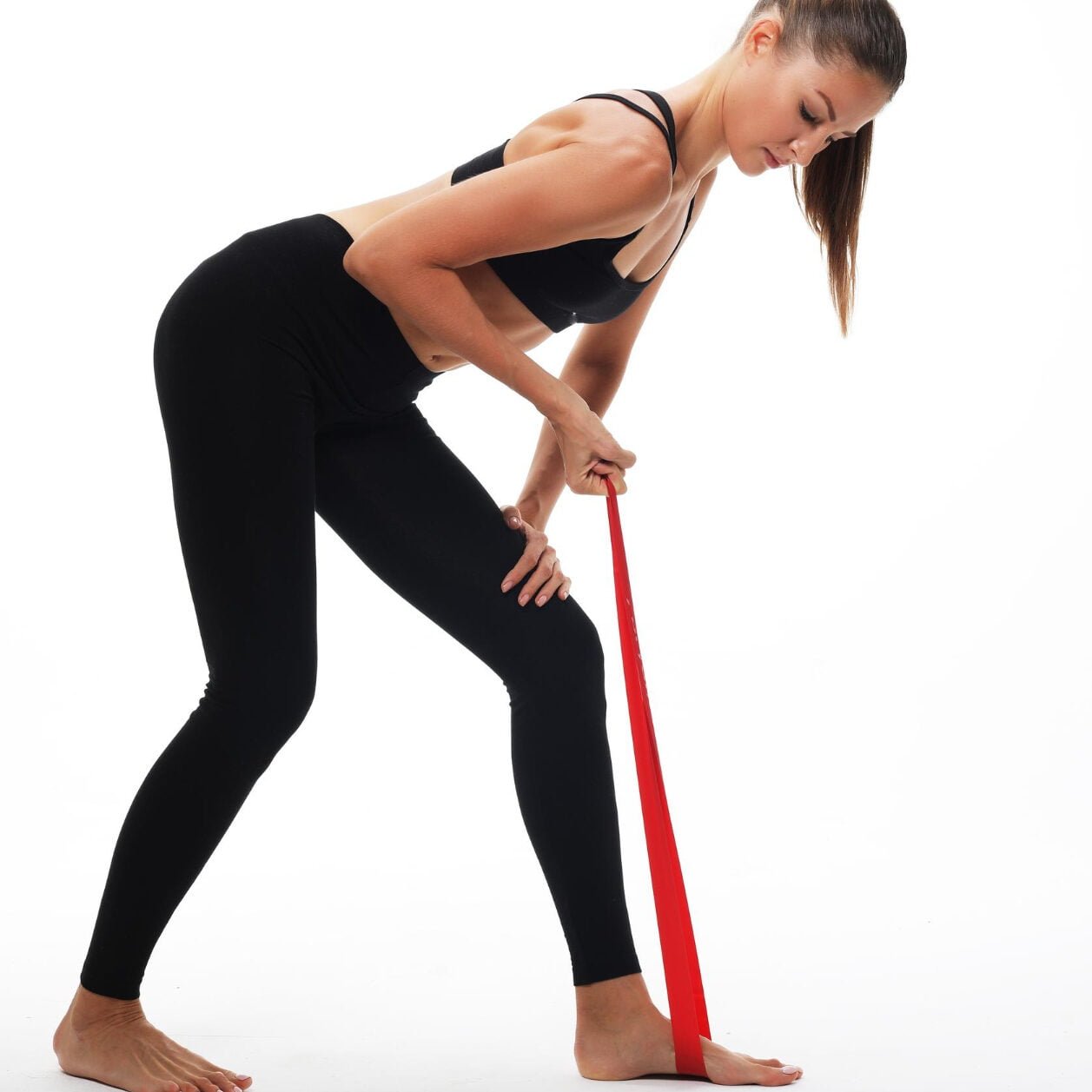
In conclusion, incorporating these 5 effective pull-up band exercises into your workout routine can significantly enhance upper body strength. By following the recommended sets and reps, you’ll quickly notice improvements in muscle tone and overall fitness.
These practical and efficient exercises provide a versatile approach to achieving your physical goals. Emphasizing the importance of consistent training, these strategies hold the potential for impactful results over time.
With dedication and proper technique, you can confidently pursue a stronger and more resilient upper body.
FAQs
1. What are pull-up band exercises?
Pull-up band exercises are resistance-training activities using sturdy bands to add tension, making movements like pulling up or pressing down more challenging for building muscle.
2. Can I use a pull-up band instead of free weights for training?
Yes, you can use a pull-up band as an alternative to free weights to perform various exercises such as lat pulldowns and tricep extensions while working out muscles effectively.
3. Are there benefits to including pull-up bands in my workout routine?
Absolutely! Pull-up bands help increase strength, especially in the upper body, during weightlifting moves like front squats and bench press by adding extra resistance.
4. What upper body muscles do pull-up band exercises target?
These exercises often target your back, shoulders, arms – think trapezius muscles and biceps – and can also engage your gluteus when incorporated with squats or leg presses.
5. How do I start with pull-up band exercises if I’m a beginner?
Beginners should warm up properly before starting with basic moves like rear delt flys or dumbbell curls; consider working with a personal trainer for guidance on proper form and technique.
6. Do pullup-bands assist only with upper-body workouts?
While they’re great for targeting the upper body in moves like butterfly adduction or rowing machine actions, they can also enhance lower body workouts through squats from standing positions on the U.S mainland’s street workout spots.

Author
Years ago, the spark of my life’s passion ignited in my mind the moment I stepped into the local gym for the first time. The inaugural bead of perspiration, the initial endeavor, the very first surge of endorphins, and a sense of pride that washed over me post-workout marked the beginning of my deep-seated interest in strength sports, fitness, and sports nutrition. This very curiosity blossomed rapidly into a profound fascination, propelling me to earn a Master’s degree in Physical Education from the Academy of Physical Education in Krakow, followed by a Sports Manager diploma from the Jagiellonian University. My journey of growth led me to gain more specialized qualifications, such as being a certified personal trainer with a focus on sports dietetics, a lifeguard, and an instructor for wellness and corrective gymnastics. Theoretical knowledge paired seamlessly with practical experience, reinforcing my belief that the transformation of individuals under my guidance was also a reflection of my personal growth. This belief holds true even today. Each day, I strive to push the boundaries and explore new realms. These realms gently elevate me to greater heights. The unique combination of passion for my field and the continuous quest for growth fuels my drive to break new ground.





